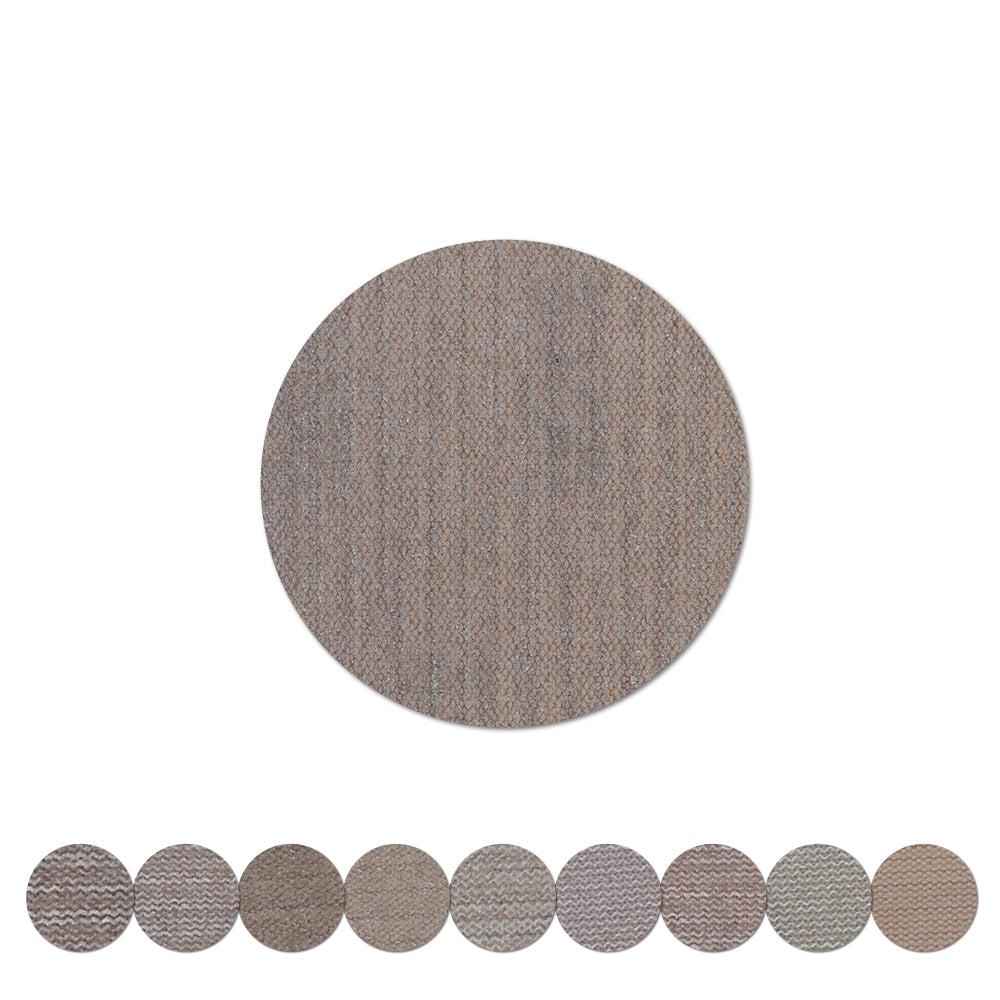What are the types of sandpaper?
Sandpaper can be divided into sandpaper and sand belt according to its shape. Sandpaper, like the paper we use, can be torn off directly by hand. The back of the sand belt is usually made of fabric, which is more durable when used in conjunction with a polishing machine.
According to different grinding materials, it can be divided into dry sandpaper, water sandpaper, and sponge sandpaper.
1. Dry sandpaper, also known as dry sandpaper, is a type of paper that uses synthetic resin as an adhesive to stick silicon carbide abrasive particles onto latex paper. The gaps between the sand particles are large, and the debris will automatically fall off, making it less prone to clogging during the polishing process and affecting the polishing process. It is suitable for polishing metal surfaces, wood surfaces, putty, and coatings. Dry sandpaper is generally made of special kraft paper or latex paper.
2. Water sandpaper, also known as water sandpaper or water-resistant sandpaper, is made of silicon carbide as the abrasive material. The paper base is usually kraft paper, and the texture of water sandpaper is relatively fine. The gaps between the sand particles are small, and the debris particles produced by grinding are also small. When used with water, the debris will be washed out, so it will not affect the sharpness of the sand particles. Water sandpaper is suitable for polishing things with finer textures and is also suitable for post-processing. It is applied in industries such as stone polishing, hardware processing, grinding tool processing, and automotive polishing.
3. Sponge sandpaper, also known as sponge sand block, is a type of sandpaper that is based on a sponge and implanted with abrasive sand particles. It is characterized by softness, elasticity, strong water absorption, and can be reused. It is widely used for polishing and grinding surfaces in solid wood processing, metal stainless steel processing, mechanical manufacturing, and other industries.
According to different grinding materials, it can be divided into dry sandpaper, water sandpaper, and sponge sandpaper.
1. Dry sandpaper, also known as dry sandpaper, is a type of paper that uses synthetic resin as an adhesive to stick silicon carbide abrasive particles onto latex paper. The gaps between the sand particles are large, and the debris will automatically fall off, making it less prone to clogging during the polishing process and affecting the polishing process. It is suitable for polishing metal surfaces, wood surfaces, putty, and coatings. Dry sandpaper is generally made of special kraft paper or latex paper.
2. Water sandpaper, also known as water sandpaper or water-resistant sandpaper, is made of silicon carbide as the abrasive material. The paper base is usually kraft paper, and the texture of water sandpaper is relatively fine. The gaps between the sand particles are small, and the debris particles produced by grinding are also small. When used with water, the debris will be washed out, so it will not affect the sharpness of the sand particles. Water sandpaper is suitable for polishing things with finer textures and is also suitable for post-processing. It is applied in industries such as stone polishing, hardware processing, grinding tool processing, and automotive polishing.
3. Sponge sandpaper, also known as sponge sand block, is a type of sandpaper that is based on a sponge and implanted with abrasive sand particles. It is characterized by softness, elasticity, strong water absorption, and can be reused. It is widely used for polishing and grinding surfaces in solid wood processing, metal stainless steel processing, mechanical manufacturing, and other industries.
Continue Reading

What are mesh sanding discs?
Mesh sanding discs are abrasive materials designed for sanding and finishing applications. Unlike traditional solid sanding discs, mesh sanding discs feature a perforated design, allowing for su...
Learn More

Are sanding discs universal?
Sanding discs are not universally compatible with all sanding tools. The compatibility of sanding discs depends on the type and size of the sanding tool you are using. Different sanding tools, suc...
Learn More
